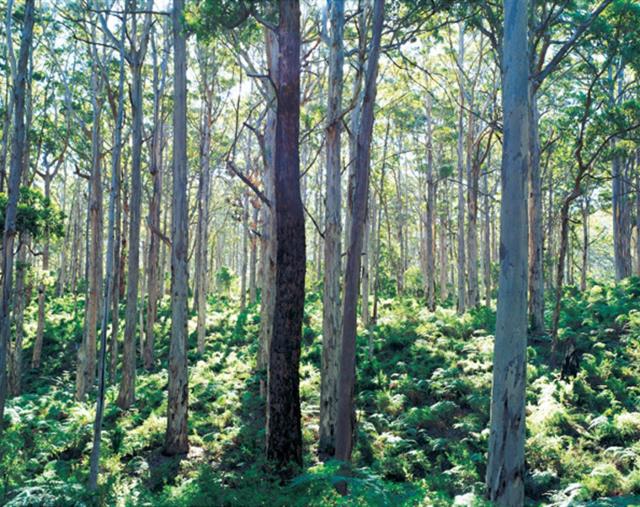By Beatrice Hawkins
In a previous column I described a tree I admire, the lignotuberous Carbeen, more commonly known as the Morton Bay Ash, and had found some fascinating facts regarding this spectacular tree. I reported that a lignotuber is a growth around the base of the tree.
On further investigation I found that these growths can be either above or below the ground. They are most common on trees that are in areas prone to fire and drought and are nature’s way of protecting the trees and ensuring they survive hard times.
Among the many Australian trees possessing lignotubers is the Western Australian Jarrah and they can be up to 10 feet wide and three feet deep! Many other eucalypts, varieties of Mallee and banksias also have these lifesaving growths.
I am a great admirer of Jarrah as a furniture timber and have seen many beautiful pieces made from it.
As with red cedar on the east coast, it was used extensively for building and, similarly, there are now few stands of old growth Jarrah to be seen in WA. It is grown as a plantation timber however, and on one occasion when flooring was needed it was the cheapest and best timber available, so there is a large modern wool shed and ram selling complex in the New England area with a spectacular Jarrah shearing board and wool room floor!
It was also, for many years, used for railway sleepers as it is such a hard, durable and pest resistant timber.
The term “lignotuber” was coined by Australian botanist Leslie R Kerr in 1924.
The beautiful Carbeen grows in an area from Narrabri north through Charleville and right up the Cape York Peninsula. Locally I have seen them out in the Goomburra area.
It is, in fact, the most northerly growing eucalypt with a specimen growing near the tip of the cape.
I have read of them being described as an ideal street tree. Given the height to which they can grow I have my doubts on that, especially if they were anywhere near overhead power lines.
The largest lignotuber in Australia is probably a Red Bloodwood tree known as “Old Bottle Butt” growing near Wauchope in NSW. The lignotuber on this tree is about 2.5 metres high and 16.3 metres in circumference at chest height.
They are not unique to Australian trees as the huge Californian redwoods also have them as do trees in many other areas of the globe.
In 1977, during a wild storm in California, a lignotuber was washed into Blue Lagoon near Eureka. It was about 12.5 metres in diameter, approximately half as high and was estimated to weigh an amazing 476.3 tonnes!
Don’t forget the bus trip to Doomben to the Queensland Garden Expo next Friday 16th March. Everyone is welcome and tickets are available at Danny Lyons in Palmerin Street. Come along and enjoy a fun day out with like-minded people and get the latest innovations and inspirations for your gardens.
(SUBHEAD)
A vegetable garden update…
The hot weather decimated my vegetable garden and very few watermelons were enjoyed! Rockmelons were a different story with lots being picked, enjoyed and shared with friends. The flavour of fresh melons straight from the garden is really delightful. They are still thriving and setting fruit, so obviously this garden is in a position that suits them admirably.
The cucumbers have been spectacular and many have been shared around. Large quantities of cucumber and pineapple pickles made and shared also. Something different and delightful with cold meats or as a dip.
The prickly cucumbers that I experimented with are growing well but haven’t set much fruit as yet.
The extreme weather even ruined my climbing beans and the only tomatoes to continue producing are the tiny yellow low acid ones. I do have bok choy and wombok coming on well however and the passionfruit and grape vines are flourishing.
The cooler cloudy days and some rain have been very beneficial and given new life to lawns, gardens and gardeners!
*This is an old article that has been digitised so our readers have access to our full catalogue.







